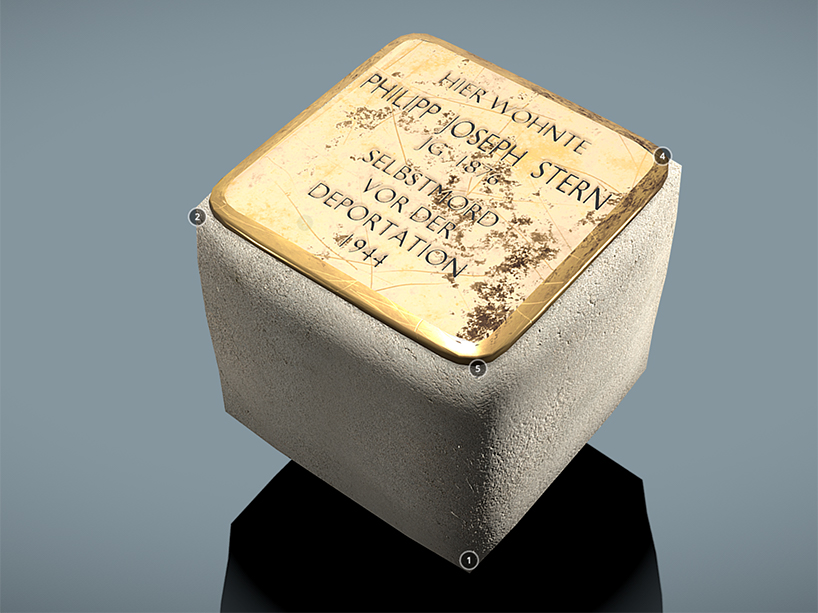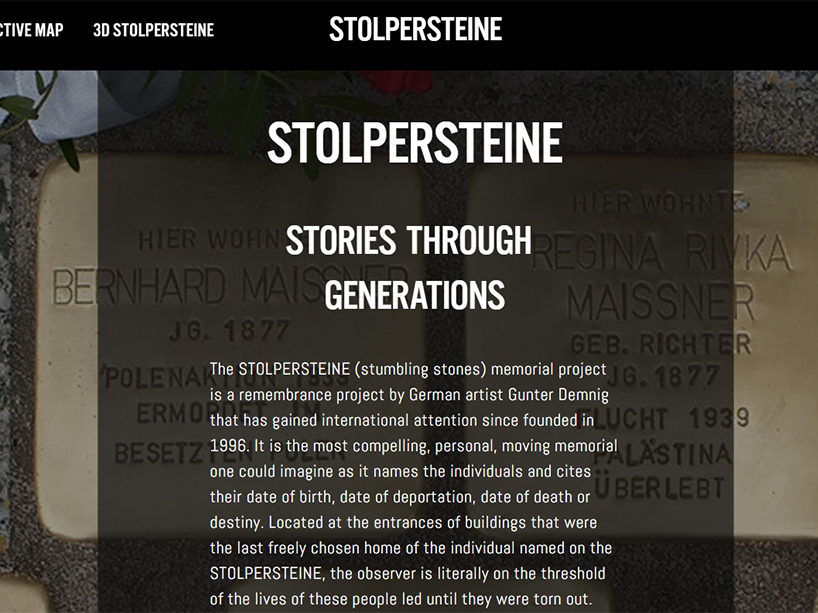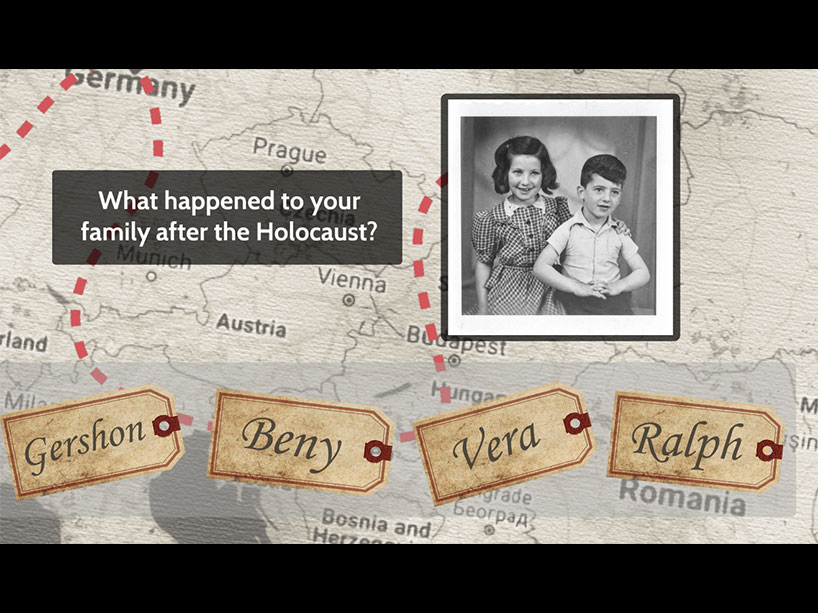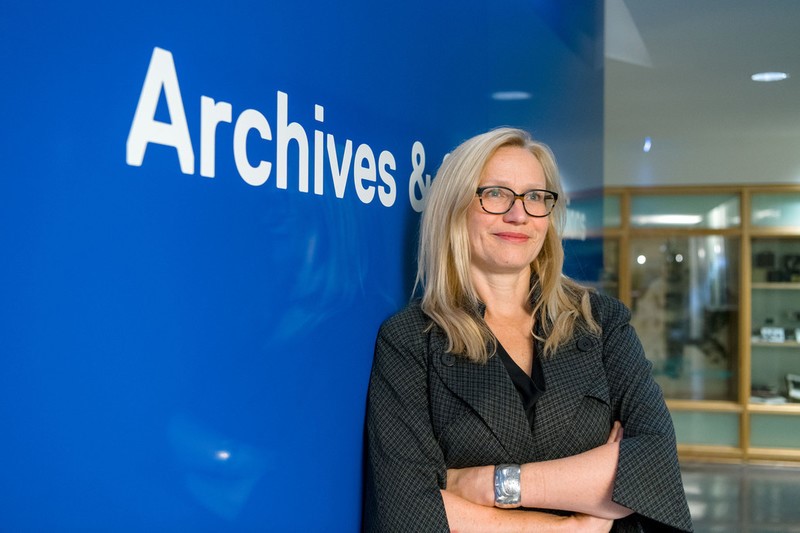Virtual experience commemorates Holocaust victims and their families

A Stolperstein, or stumbling stone, which is a remembrance project by German artist Gunter Demnig. Each stumbling stone contains the names, date of birth, date of deportation, and date of death or destiny of the victims of the Holocaust. They are located at the entrances of buildings that were the last freely chosen home of the individual named on the stumbling stone.
If you walk down certain cobblestone streets in Europe, you might come across a Stolperstein (stumbling stone) at your feet.
The Stolpersteine are commemorative cobblestones that are placed in front of houses that were the last freely chosen homes of people who were victims of the Holocaust – imprisoned, displaced or murdered. German artist Gunter Demnig started the project in 1996 and has so far installed more than 70,000 brass plaques in 21 European countries.
In May 2020, the German Consulate Toronto approached Ryerson Library with the idea to jointly create a virtual experience based on the Stolpersteine memorials and a year later this creative partnership produced “Stolpersteine: Stories Through Generations.” The project brings the stories of four Canadian families alive through the narrative of audio interviews and private family images.


Screenshots of the Stolpersteine virtual experience which includes an interactive map, 3D rendering of the Stolperstein and testimonials of four Holocaust survivors or descendants to start.
The website (external link) was launched by the German consulate on May 5 during Liberation75, the largest global gathering of Holocaust survivors and their descendants to commemorate the 75th anniversary of liberation from the Holocaust. Marnie Salsky, the artistic lead of the virtual experience and an MFA Documentary Media student at Ryerson, spoke about how the website is based on the idea that every stone represents an individual's own story. The goal, she said, was to create an intimate experience for the user, to bring to life the stories of both those named on the Stolpersteine as well as the person sharing their story. The intention is to preserve the memory and the deeply moving personal stories and insights and serve as an access point for further education to make Holocaust remembrance more relatable for younger generations.
During the launch event, Salsky provided a virtual guided tour which included an overview of the project, testimonies from each individual, an interactive map including audio clippings of the individuals speaking about what the stones represent to them, and a 3D interactive rendering of the Stolperstein with information on what it signifies and how it is made.
Marnie worked alongside the Ryerson Library team who had partnered with the German Consulate to create the virtual experience: Michael Carter-Arlt, immersive technology specialist; Nathaniel Brunt, a graduate student in Ryerson’s communication and culture degree program; Sally Wilson, web services librarian; and Fangmin Wang, head of library information technology services.
The Ryerson Library provided consultation services and guidance for creating the appropriate narrative, created the design, built the website and created 3D images.

Chief Librarian, Carol Shepstone. The Library team partnered with the German Consulate on the design and development of the project.
The Library took on the project as part of its community engagement and collaboration with partners in the cultural heritage sector, says Carol Shepstone, chief librarian. The online virtual experience was an exciting opportunity to build off of the Library’s previous digital-focused work.
“This is important history that is so easily forgotten with the loss of survivors through time,” said Shepstone. “The expertise that we bring to this kind of project and similar projects is to help enrich them in a way that expands engagement and builds on the experiential aspect.”
To access the virtual experience, visit the Stumbling Stones page (external link) which will be updated to include more interviews and stories. For more information about Ryerson Library services, visit the Library’s website.